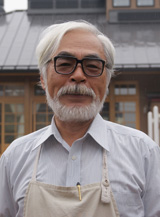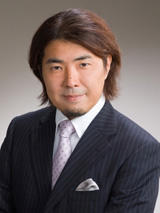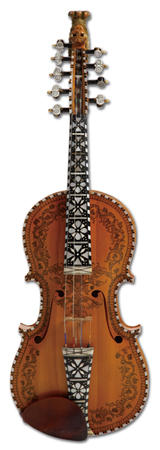About the Hardanger Club
Nonprofit Group Japan Hardanger Club
References
Activity schedule
About Hardanger
Hardanger fiddle
The Japan Hardanger Club was started as a non-profit group with the purpose of promoting cultural exchange, welfare activities, and the traditional art forms of Scandinavia.
Main Club activities includes,
Project management with the creation and development of festivals, tours and events in Scandinavia.
Activities promoting Scandinavian culture and traditional arts.
Welfare promotional activities.
The exchange of local talent between Scandinavia and Japan.
Activities to promote tourism to Scandinavia
Through these activities the overall goal is to be a major contributor to an increasingly vibrant cultural exchange between Scandinavia and Japan.
For specific details on our services please contact the Japan Hardanger Club by telephone or e-mail (for details see below).
Thank you for your interest and cooperation.
Article 1.The name of the Club shall be Nihon Harudangeru Kurabu and in English, Japan Hardanger Club.
(Office)
Article 2.The head office of the Club shall be located in the Tokyo Office of One Third Career at ARICA Bldg. 5F Ebisu Nish 1-21-6, Shibuya-ku, Tokyo.
(Objectives)
Article 3.The objectives of the Club are to perform undertakings related activities promoting culture and art for people interested in the traditional art and culture of the Hardanger region of Norway and to provide opportunities for Japanese and Hardanger cultural exchange.
(Types of Non-Profit Activities)
Article 4.The Club shall engage in the following types of non-profit activities in order to achieve the objectives outlined in the preceding article.
(1) Activities promoting the PR of the Hardanger region of Norway
(2)Activities designed to promote academic development, culture, and arts
(3)Charity activity
(4)Liaisons with, counsel for and support of management or activities of organizations engaging in any of the above activities
(Undertakings)
Article 5.The Organization shall undertake the following undertakings in order to fulfill the objectives outlined in Article 3.
(1)Undertakings related to non-profit activities
(2)Activities to promote music, arts, culture and the expansion of the Japanese market for Hardanger tourism
(3)The academic papers designed to promote music, arts and culture and advertising activities for the Club
(4)Sponsoring of events
(5)Activities to contribute to the stimulation of the Hardanger region through Hardanger traditional music, arts, handicrafts and tourism
(6)Selection committee for free training course of Hardanger traditional music, arts and handicraft as well as agency activities disseminating Hardanger culture
(Types)
Article 6.The Club shall have the following two types of members.
(1)Full Members: Individuals and groups that have joined to support the objectives of the Club, who hold voting rights at the general meeting
(2)Foreign members are honorary membership and membership fee is free. Except cost of events etc. are non member price.
(Admittance)
Article 7.No specific conditions are prescribed for the admittance of members.
(1)Individuals or groups wishing to be admitted as members shall submit to the Secretary General an application form separately provided for.
(2)Once the Secretary General has received an application and the applicant is deemed to be supportive of the objectives of the Club, in the absence of just cause, s/he must approve admittance of such applicant.
(3)In the event that the Secretary General does not approve admittance of the applicant in the preceding paragraph, s/he must notify the applicant to that effect promptly in writing providing reasons for non-admittance.
(Enrollment and Membership Fees)
Article 8.Members must pay the enrollment fee and membership fee determined separately at the general meeting.
(Loss of Membership)
Article 9.Members shall lose their membership in the event of any of the following.
(1) Submission of a notice of withdrawal
(2)Failure to pay membership fees continuously for over a year.
(3)Expulsion
(Withdrawal)
Article 10.Members may voluntarily withdraw from membership by submitting to the Secretary General a notice of withdrawal separately prescribed by the Chairperson.
(Expulsion)
Article 11.Members may be expelled by a resolution of the general meeting in the event of the members falling under any of the following items. In this case the said member must be given the opportunity to defend himself/herself before the voting for resolution.
(1)A violation of these Rules, etc.
(2)Involvement in any act that may damage the reputation of the Club or is contrary to the objectives of the Club.
(Non-Refundability of Contributed Money and Property)
Article 12.Any payments for enrollment fees, membership fees or other money or property contributions already received shall not be refunded.
Assets and Accounting
Article 1.The assets of the Club comprise of the following.
(1)Assets recorded in the inventory of property at the time of establishment
(2)Membership fees
(3)Money and property contributions
(4)Income from undertakings
(5)Other income
(Fiscal Year)
Article 2 The fiscal year of the Club shall start on January 1 and end on December 31 of the following year.
(Supplementary Provisions)
1.These Rules shall become effective from the date of foundation of the Club.
2.The Officers of the Club at the time of establishment are:
Chairperson: Rio Yamase /Violinist, Hardanger violinist, compose & arrangement
Directors: Edmund Harris Utne / Hotel Ullensvang
Ole Johansson / Scandinavian Airlines, Japan
Taku Miyamoto / Scandinavian Tourist Board
Fujio Ota / Tumlare Corporation
Secretary General: Mikio Fujishima
3.The term of office for the founding Officers of the Club shall be the period from August 29, 2009 to August 31, 2011 (Elections for officers shall be held once every two years).
4.The first business plan and annual budget of the Club shall be determined at the founding general meeting to be held in September 1, 2009.
5.The first fiscal year of the Club shall be from the date of foundation to December 31, 2010.
6.The general meeting shall be held once a year at the end of the year.
7.Notwithstanding the provisions of Article 8, the enrollment and membership fees at the time of the foundation of the Club shall be as follows.
(1) Full Members Membership Fees 1 unit 2,000 yen (minimum of one unit required)
(2) Corporate Members Membership Fees 1 unit 10,000 yen (minimum of one unit required)
 “While listening over and over again to the music of Rio Yamase it occurred to me that her music would be perfect for the water-spider animation that I was planning. Lucky for me, “Mon Mon the water-spider” was one of these rare cases where the music was already decided when I started making the movie. I found the Hardanger violin of Rio Yamase to be perfect to describe this tender and mellow, but also adorable little creature of this world.
“While listening over and over again to the music of Rio Yamase it occurred to me that her music would be perfect for the water-spider animation that I was planning. Lucky for me, “Mon Mon the water-spider” was one of these rare cases where the music was already decided when I started making the movie. I found the Hardanger violin of Rio Yamase to be perfect to describe this tender and mellow, but also adorable little creature of this world. Rio Yamase, thank you, and congratulations with the ‘Japan Hardanger Club’.”
November 2009,
Miyasaki Hayao (Prominent Japanese filmmaker of animated feature film and co-founder of Studio Ghibli animation production company).
 “Congratulations with the establishment of the ‘Japan Hardanger Club’.
“Congratulations with the establishment of the ‘Japan Hardanger Club’.Even in Norway which is abundant in nature resources, Hardanger is an area with special scenic beauties. A place where traditional culture, like folk-music and traditional handcrafts, have been preserved and vibrantly continues to exist. The well-known nationalist composers Edvard Grieg and Geir Tveitt found pleasure with things from Hardanger. In particular, they were fascinated by the timbre of the Hardanger violin and this greatly inspired their work.
I am delighted to hear that Rio Yamase, which is an outstanding performer on the Hardanger Violin and for many years has been playing Norwegian music, working to introduce Norwegian culture in Japan, has become the president of the ‘Japan Hardanger Club’.
I sincerely hope and pray that through the work of the Hardanger Club even more people will find pleasure in Norwegian culture”.
Arne Walther (Norwegian Ambassador in Japan)
 “Congratulations with the establishment of the ‘Japan Hardanger Club’. I am very pleased to have become a member myself.
“Congratulations with the establishment of the ‘Japan Hardanger Club’. I am very pleased to have become a member myself.Both Norway and Japan is rich in mountain and ocean resources and the people living there are a little shy - but kind. This way the two countries resemble each other.
Being particularly blessed with abundant resources and culture, the Hardanger region has developed and influenced the Norwegian society for a long time. I am very confidence that the cultural exchange with this region and Japan will play an important role to deepen the understanding and enable us to reach into the wonders of each other culture.
When I first listened to Rio Yamase’s violin, I remembered the wind blowing in Norway. This wind blowing through the steep and narrow valleys of the fiords may sometimes be gentle and mild, but sometimes it displays overwhelming power - like a storm.
To have this combination of ‘delicacy’ and ‘boldness’ performed on the Hardanger violin is, for me, a symbol of the Norway-Japan cultural exchange.
There’s no doubt about it, with the Hardanger Club I want to take part in cultural exchange with Norway and Japan!”
"Velkommen til Hardanger klubb!!"
Taku Miyamoto(Scandinavian Tourist Board - Director Japan STB)
[Cooking school: “Food from Hardanger”]
22nd of may (sat) 12:00 - 15:00
Place: Roppongi Hills Club
Guest instructor: STIG DRAGEIDE from Norway (Chef at the Roppongi Hills Club). Introducing traditional food that everybody can make at home (Includes lunch and souvenirs).
Fee: 6000,- yen(Hardanger club members) /8000,- yen (ordinary)
[JHC ?Scandinavia Aurora festival]
25th of june (fri) 18:30 (Start)
Place: Roppongi Hills Club
Come and enjoy Norwegain music with Rio Yamase at the “Scandinavia Aurora festival” together with delicious Norwegian cooking prepared by the chef at the Hills club, Stig Drageide.
Fee: 10.000,- yen (Hardanger club members)/12.000,- yen (Ordinary)
[Scandinavian tour with Rio Yamase. “Norwegian wood in 8 days”]
19th ~26th of august
“Norwegian wood in 8 days” tour gives you the opportunity to experience the beautiful music and scenery of Scandinavia.
The Hardanger area, being adored by Edvard Grieg for its beauty, is the main objective of the tour.
From the 21st of august it is also possible to participate in different events at the “Japan Hardanger culture exchange festival”; like a concert in Ullensvang Church (build in the 12th century), tending various exhibitions or taking folk dance lessons at the culture house. The 22nd of august you can experience making traditional jam, trekking, salmon-fishing, receive Hardanger violin and folk-dance lessons or practice Hardanger embroidery. (For details see here)
[The “Norwegian forest cat” and salmon cooking.]
October 2nd (sat) 16:00~1800
Please come the cat-caf? RIEN in Shibuya to play with the Norwegian forest cats and eat delicious Norwegian salmon. The caf?-owner, Sachiko Watabe, will teach you everything you need to know about breeding and how to keep this fascinating animal as a pet.
Christmas concert at the Imperial Hotel.
1st~3rd of December.
Place: The Imperial Hotel
There will be a Hardanger violin concert and Norwegian folk dance performance.
* All the respective and upcoming events are subject to “priority booking” and “special members prize” for the Japan Hardanger Club members. As soon as the details about the events are decided members will be informed. (This web page will also continuously be updated).
Norway's greatest composer, Edvard Grieg, came every year to Hardanger to get inspiration for his work. It is even possible to visit the lodge where he wrote several of his masterpieces, which remains exactly as it was, in the garden of Ullensvang hotel in Lofthus.
[See the amazing Aurora/Northern Lights!]
Enjoy the Northern Lights in Tromso, the arctic city of Norway, which is probably one of the best places in the world to see the northern lights. It's very hard to impart the strange awe and wonder that the Aurora Borealis inspire in oneself - it's a magical display that is far beyond words.
[Hardanger embroidery.]
Is a traditional Norwegian handcraft which was used to make and decorate traditional Norwegian costume items called “Bunad” (long aprons) as well as other items of clothing and household linens such as mats, curtains and bedspreads.
[Traditional food from Hardanger.]
Salmon, trout and lamb may be the most famous traditional food, but the homemade beer and apple cider from Hardanger is also well-known in Norway. Today, The Hardanger area is a major producer of fruit and berries (mainly apples, pears, cherries, plums, raspberries and strawberries), and home-made sweet cakes like “lefse” and “svele” is a must-have for sweat-tooth’s from all over the world!
[The traditional costume, “Hardanger Bunad”.]
Similar to the kimono in Japan, it is common to wear bunad as a costume at various celebrations, such as weddings and the national day celebration in Norway. The bunads are local to Norway’s districts and can be found in a large variety all over the country, but the Hardanger bunad is considered representative for this tradition.

 ‘Hardanger fiddle’ or ‘Hardanger Violin’ is a traditional string instrument from Norway with its origin from the Hardanger region. In Norway it is called ‘Harding fele’ and is considered much the same way as Koto and Shamisen is in Japan.
‘Hardanger fiddle’ or ‘Hardanger Violin’ is a traditional string instrument from Norway with its origin from the Hardanger region. In Norway it is called ‘Harding fele’ and is considered much the same way as Koto and Shamisen is in Japan.The instrument is very similar to the violin though with eight or nine strings (rather than four on a standard violin) and thinner wood. Four of the strings are strung and played like a violin, while the rest, aptly named under-strings resonate under the influence of the other four. The violin is usually rich in decoration with extensive mother of pearl inlay and black ink 'rose-painting’ on the body of the instrument. On top of the peg-box a carved animal (usually a dragon) is carved out of the wood.
The famous composer Edvard Grieg adapted many Hardanger folk tunes into his compositions, and composed tunes for the Hardanger violin as part of his score for Ibsen’s Peer Gynt. For example, it is widely believed that the opening phrase of ‘Morning’ from Grieg's ‘Peer Gynt’ music is derived from the tuning of the sympathetic strings of the Hardanger fiddle: (A F♯ E D E F♯). The earliest known example of the Hardanger violin was made by Ole Jonsen Jaastad and dates back to 1651. This violin is now preserved in the Bergen National Museum. Originally, the instrument had a rounder, narrower body and fewer resonant strings, but around 1850 the instrument was improved and the modern layout became much like the violin in size and quality of sound, with 5 resonant strings as a norm.
[Gammaldans] (Norwegian folk dance)
Dance is also very important since music and dance are inseparable and were cultivated together from the very beginning. ‘Folk dance’, ’Village dance’ or ‘Gammeldans’, are terms most commonly used for a variety of regional, traditional dances in Norway. These dances, and the accompanying Hardanger violin, are normally seen as the oldest living musical traditions in the country (Edvard Grieg also incorporated some of these old dance forms, like ‘Springar’, ‘Gangar’ and ‘Halling’, into his music).



